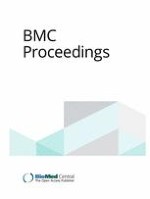Erschienen in:

Open Access
01.10.2016 | Proceedings
Identity-by-descent mapping for diastolic blood pressure in unrelated Mexican Americans
verfasst von:
Xiao-Qing Liu, Jillian Fazio, Pingzhao Hu, Andrew D. Paterson
Erschienen in:
BMC Proceedings
|
Sonderheft 7/2016
Einloggen, um Zugang zu erhalten
Abstract
Population-based identity by descent (IBD) mapping is a statistical method for detection of genetic loci that share an ancestral segment among “unrelated” pairs of individuals for a disease. As a complementary method to genome-wide association studies, IBD mapping is robust to allelic heterogeneity and may identify rare inherited variants when combined with sequence data.
Our objective is to identify the causal genes for diastolic blood pressure (DBP). We applied a population-based IBD mapping method to 105 unrelated individuals selected from the family data provided for the Genetic Analysis Workshop 19. Using the genome-wide association study data (ie, the microarray data), chromosome 3 was scanned for IBD sharing segments among all pairs of these individuals. At the chromosomal region with the most significant relationship between IBD sharing and DBP, the whole genome sequence data were examined to identify the risk variants for DBP.
The most significant chromosomal region that was identified to have a relationship between the IBD sharing and DBP was at 3q12.3 (p = 0.0016), although it did not achieve the chromosome-wide significance level (p = 0.00012). This chromosomal region contains 1 gene, ZPLD1, which has been reported to be associated with cerebral cavernous malformations, a disease with enlarged small blood vessels (capillaries) in the brain. Although 24 deleterious variants were identified at this region, no significant association was found between these variants and DBP (p = 0.40).
We presented a mapping strategy which combined a population-based IBD mapping method with sequence data analyses. One gene was located at a chromosomal region identified by this method for DBP. However, further study with a large sample size is needed to assess this result.